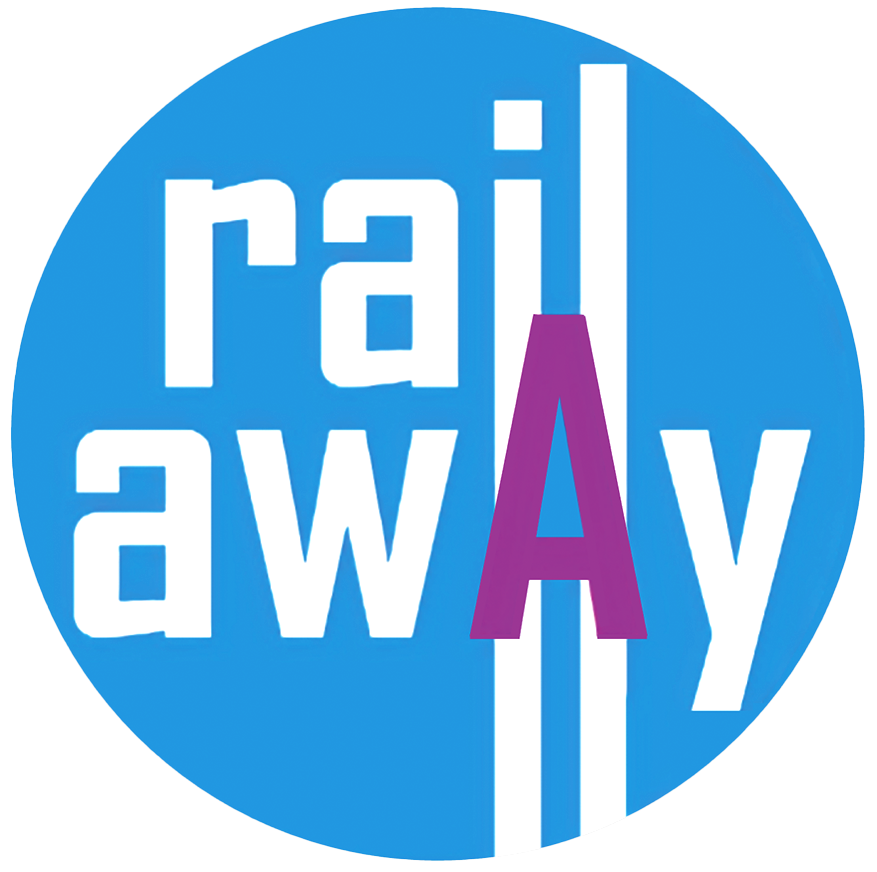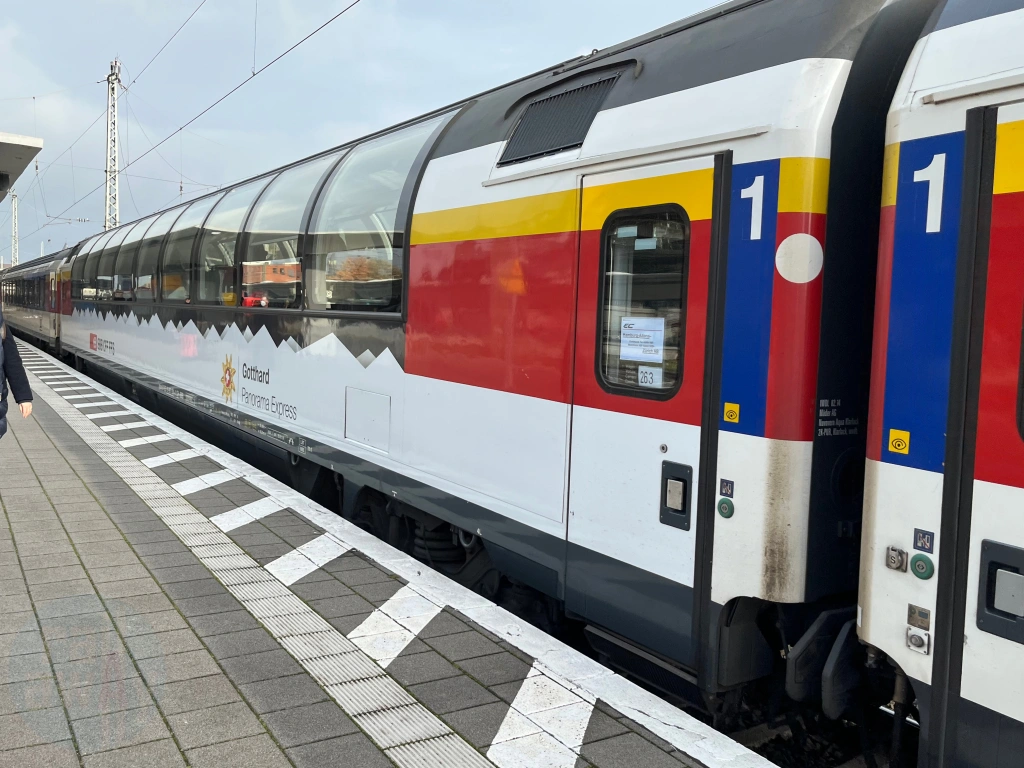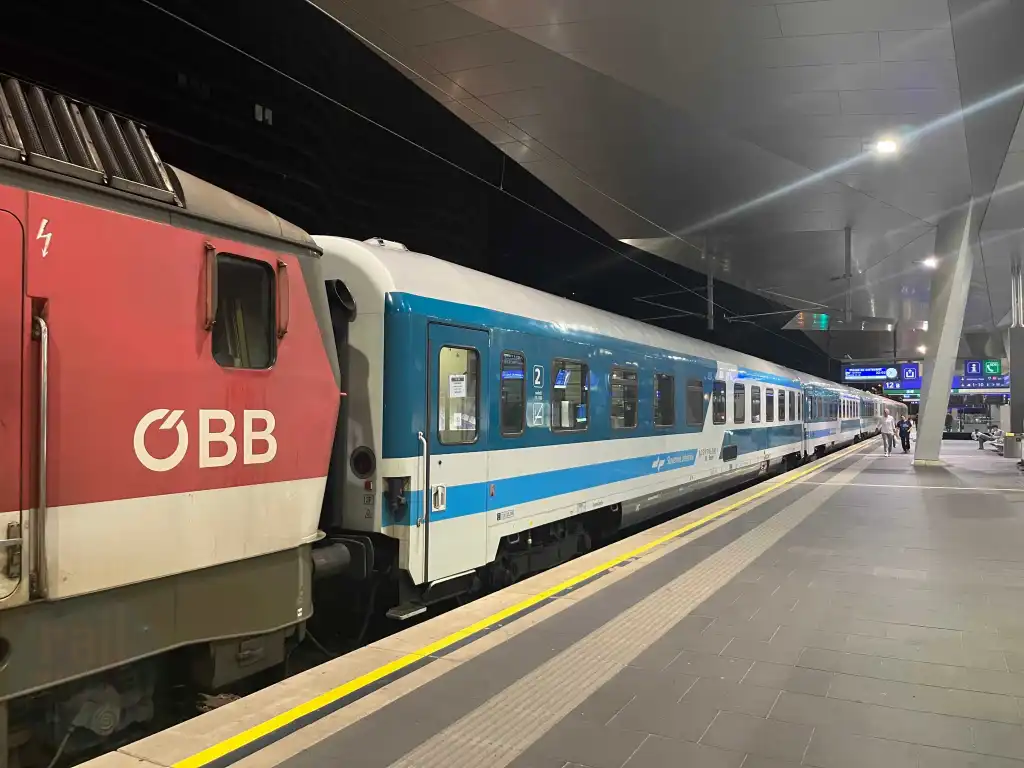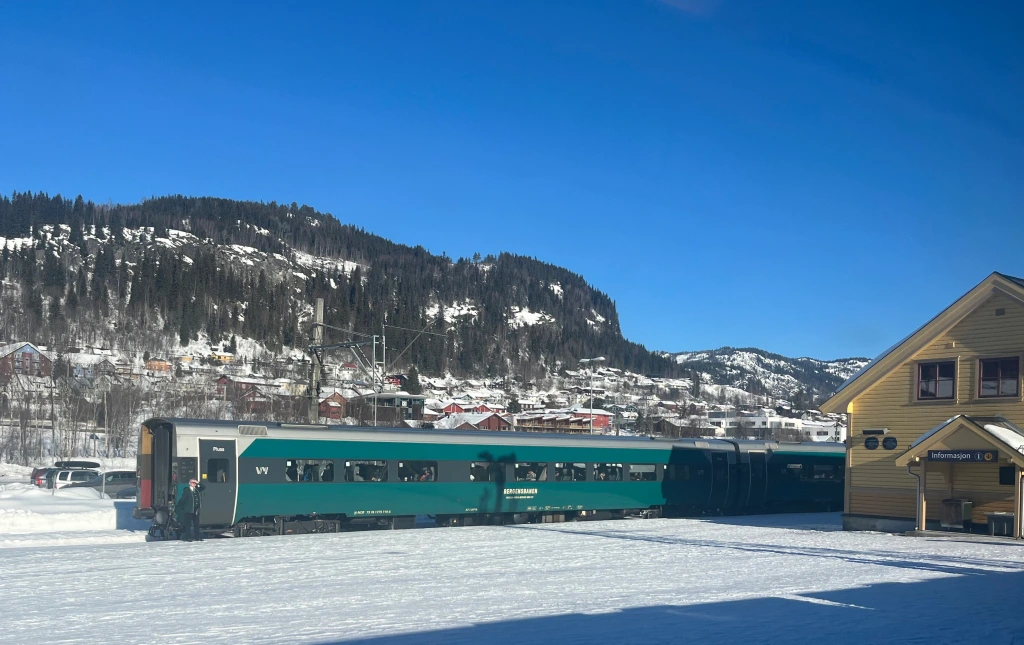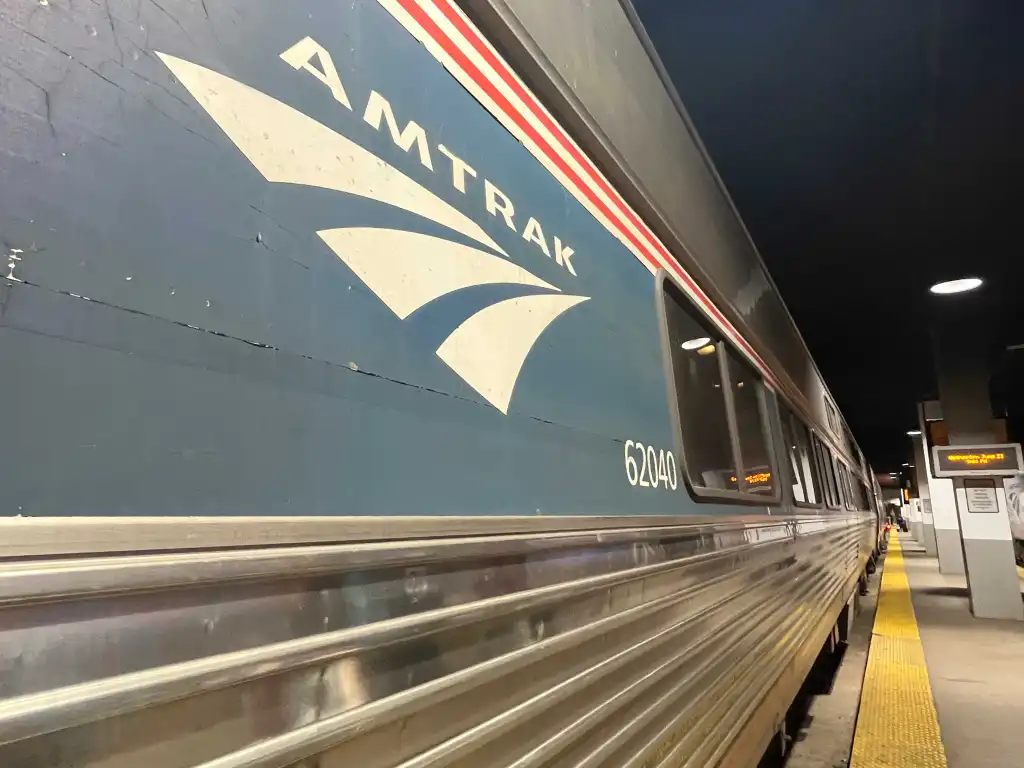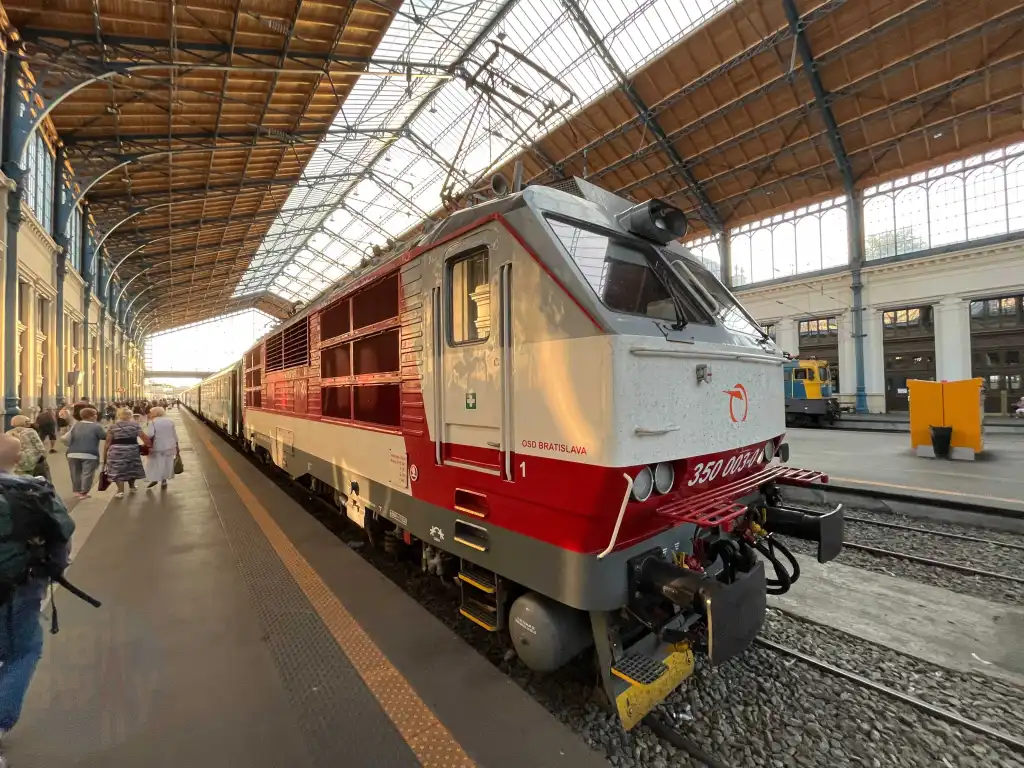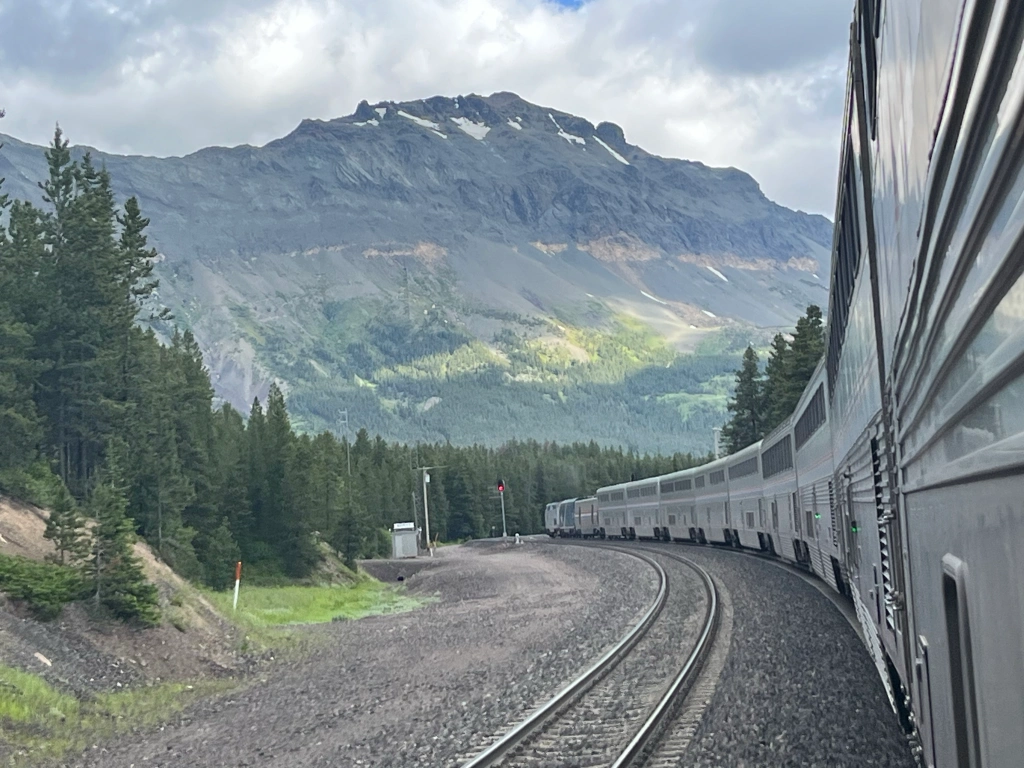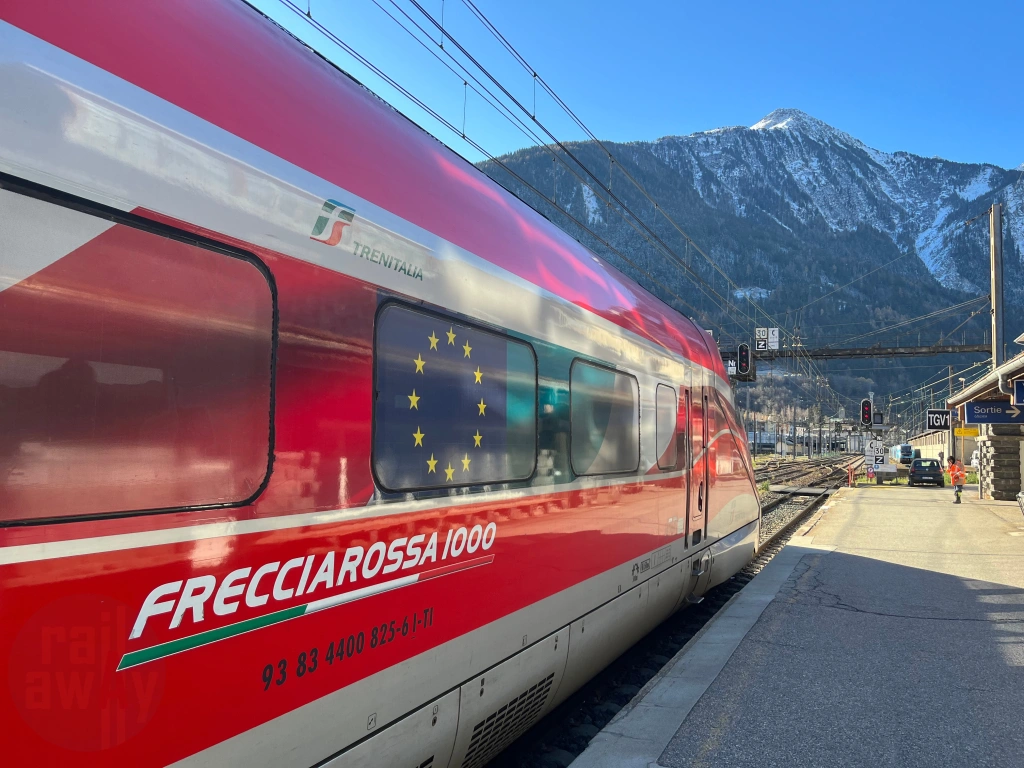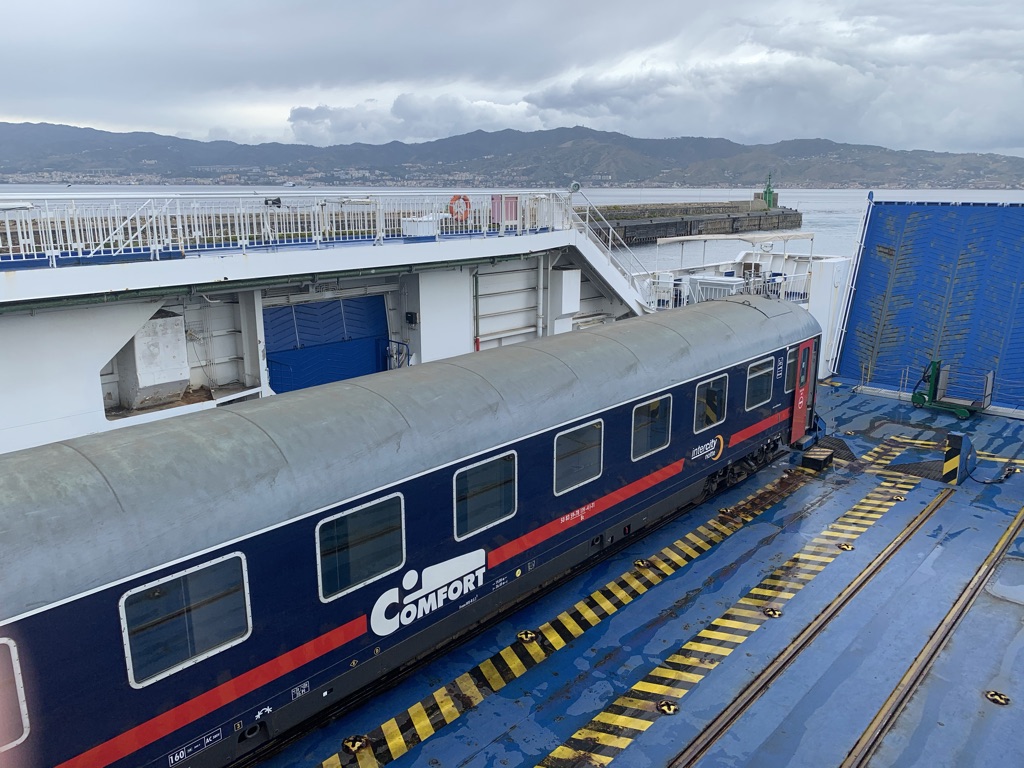This was my first time visiting Japan. A beautiful country with a welcoming culture and an inspiring transport network! The one thing I couldn’t wait to try was the Shinkansen, or bullet train, that Japan is so highly renowned for. Rest assured, there would be plenty of train trips planned in this jam-packed week-long visit.
My Japan premiere (and therefore this blog post) features:
- Flying with LOT Airways London City Airport to/from Tokyo Narita Airport via Warsaw Chopin Airport
- Tokyo Narita Airport to Central Tokyo onboard the Narita Express
- Tokyo to Kyoto by Shinkansen Hikari
- Exploring Kyoto including Hozu-gawa river boat ride
- Kyoto to Hiroshima by Shinkansen Hikari and Shinkansen Sakura
- Exploring Hiroshima and Miyajima
- Hiroshima to Izumoshi by Shinkansen Kodama and Limited Express Yakumo
- Izumoshi to Tokyo by Sunrise Izumo sleeper train
- Tokyo to Niigata by Shinkansen Max Toki
London City (LCY) to Tokyo Narita (NRT) via Warsaw (WAW) with LOT Polish Airlines
Staying over at London City airport, we kicked things off early for our Premium Economy experience through to Tokyo with LOT Polish Airlines.
Our first leg departed London City at 8am sharp, taking two and half hours to Warsaw Chopin airport onboard an Embraer-190 plane. This had the same type of seats and legroom for all classes, which was a little cramped, however we were treated to our own private cabin with Business Class customers separated from the Economy cabin by a curtain drawn shortly after departure.
Peculiarly, myself and my friend Ed, sat in row five, were the only customers travelling in Premium Economy. In the front row, a gentleman was travelling Business Class to Israel.
Upon departure, our dedicated Cabin Crew member delivered us a welcome orange juice and much to our surprise, a cooked breakfast. This was the second breakfast of the day, having also ate at the airport, but naturally we were on holiday so felt zero guilt for eating this too. We expected only a snack for this leg.
We arrived into Warsaw airport with three hours to kill before our next flight direct to Tokyo. The airport wasn’t the most comfortable with the waiting areas being small and cramped. Premium Economy doesn’t come with business lounge access, but we were able to pay a 120 PLN (c.£23.16) supplement per person. We were able to relax in there enjoying even more food, wine, beer and soft drinks. It was a busy lounge, but it was well worth paying the supplement for the duration we were in Warsaw.
We then departed Warsaw at 14:40 on our 787-Dreamliner, travelling overnight and arriving at 09:20 Japan time. The total journey time of this leg was ten hours and 40 minutes.




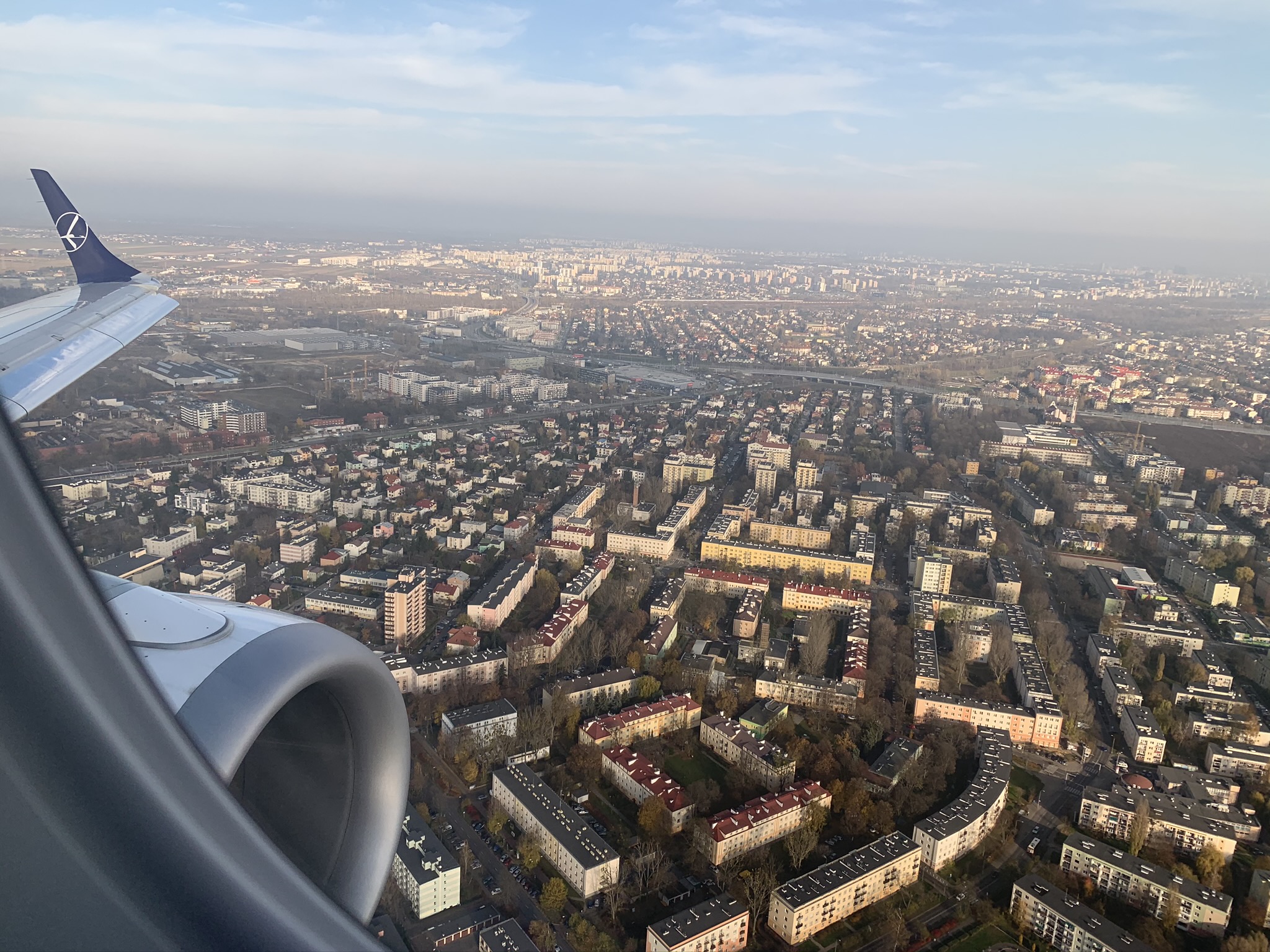

The service with LOT on both flights was second-to-none with meals on the Dreamliner fusing European cuisine with Japanese, making for some interesting dishes. Also on the Dreamliner, there was a basket of goodies that was always available. Drinks were plentiful with a glass of bubbly being offered upon boarding, another drink offered shortly after (I had a G&T), then the first meal being served with wine then tea or coffee afterwards.




Tokyo Narita Airport to Tokyo by Narita Express train
We wasted no time before travelling on our first train. We travelled on the Narita Express straight into the heart of Tokyo. The train is non-stop and takes approximately 54 minutes. We visited the JR booking office where we exchanged our JR Pass Exchange Order for the real deal – the dated JR Pass. We opted for an Ordinary Class pass over the Green Car (Japan’s First Class equivalent), the difference in the service being the seat and 3+2 seating vs 2+2 seating. The pass gave us total freedom to go anywhere we wanted to in Japan! A great feeling.
We also obtained free seat reservations for the day including the compulsory reservation for the Narita Express.
Immediately while arriving at the train station, the efficiency of the Japan Railway became apparent. We found our platform and the inbound service from Tokyo arrived and we were asked not to board. A staff ‘squad’ boarded the train at different carriages and pulled a belt across the door behind them, why? Their mission was to go through the train as quickly as they could, wiping down tables, the floor and turn around every seat with a lever so it would face the direction of travel. It was a fine art and fascinating to watch.
We boarded the train and by the entrance doors were luggage racks. Not only was there plenty of room for cases of all sizes, there were wires to wrap around the suitcase handle where you self-set a number lock to ensure your case wouldn’t be stolen. I couldn’t imagine a theft for one minute in Japan, but it’s best to be safe and we were going to the capital city afterall. If you forgot your number there was a process – travel to the final station and speak to staff who will release it. They thought of everything.
Within the passenger saloon with its spacious, reclining seats there were screens detailing information about the train’s journey featuring pages about the various weather disruption incidents across the JR East network. Line closures due to typhoons and earthquakes popped up!


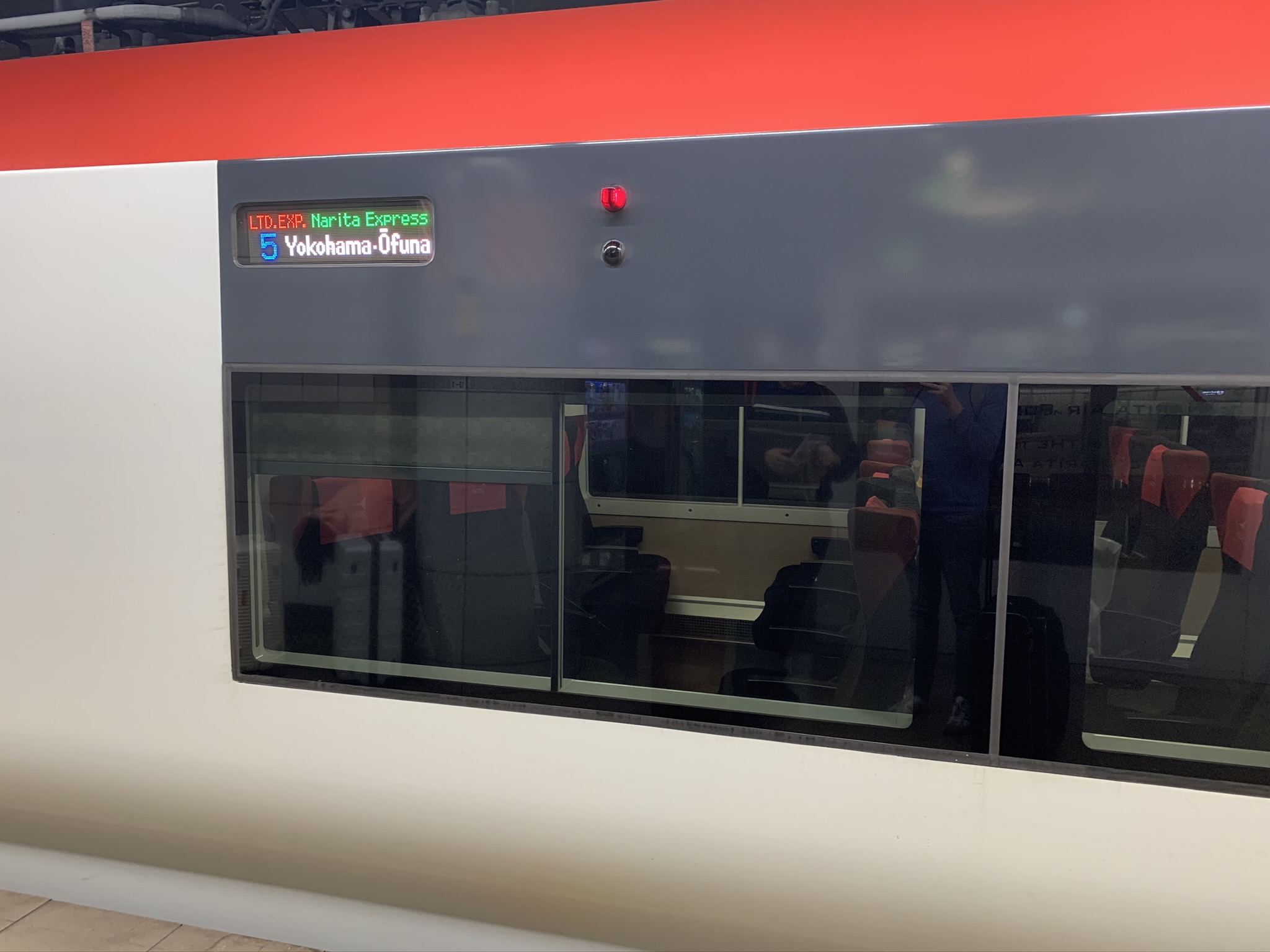



Tokyo to Kyoto by Shinkansen
This would be our first ride on the Shinkansen, travelling to Kyoto on a Shinkansen Hikari service in two hours, 40 minutes. We asked the Booking Office Clerk at the airport to make us a reservation on the side of Mount Fuji. She did so and thanked us for showing interest in the beauty of her country. Throughout the week, this culture of gratitude kept popping up.
Onboard the Shinkansen, just like the Narita Express, all the seats were facing the direction of travel. Ten minutes into the journey, a trolley manned by a very polite lady came through the carriage. She turned and bowed to customers in the carriage as she walked in and out of each carriage – that’s a lot of bowing she must do in a day’s shift! We purchased lunch from her selection of Ekiben (train bento boxes) which were shown to us on a menu complete with pictures. A delightful meal which was beautifully presented, and part of the fun is there’s always something which you’re not quite sure what it actually is!
We passed Mount Fuji in the distance, capped with snow, and took a snap.





We arrived on time into Kyoto station. The station boats an impressive array of shops – perfect for bagging that souvenir of your visit. Also don’t miss the very long ride up the escalators to the top floor of the station, where the Cube food court is. I enjoyed pork cutlet.


Exploring Kyoto
Kyoto is a very walkable city. Everywhere you walk you can see Shinkansen trains gliding past. In fact one 16-car N700 Shinkansen series train alone weighs 715 tonnes – it was unreal to think that was flying above your head!



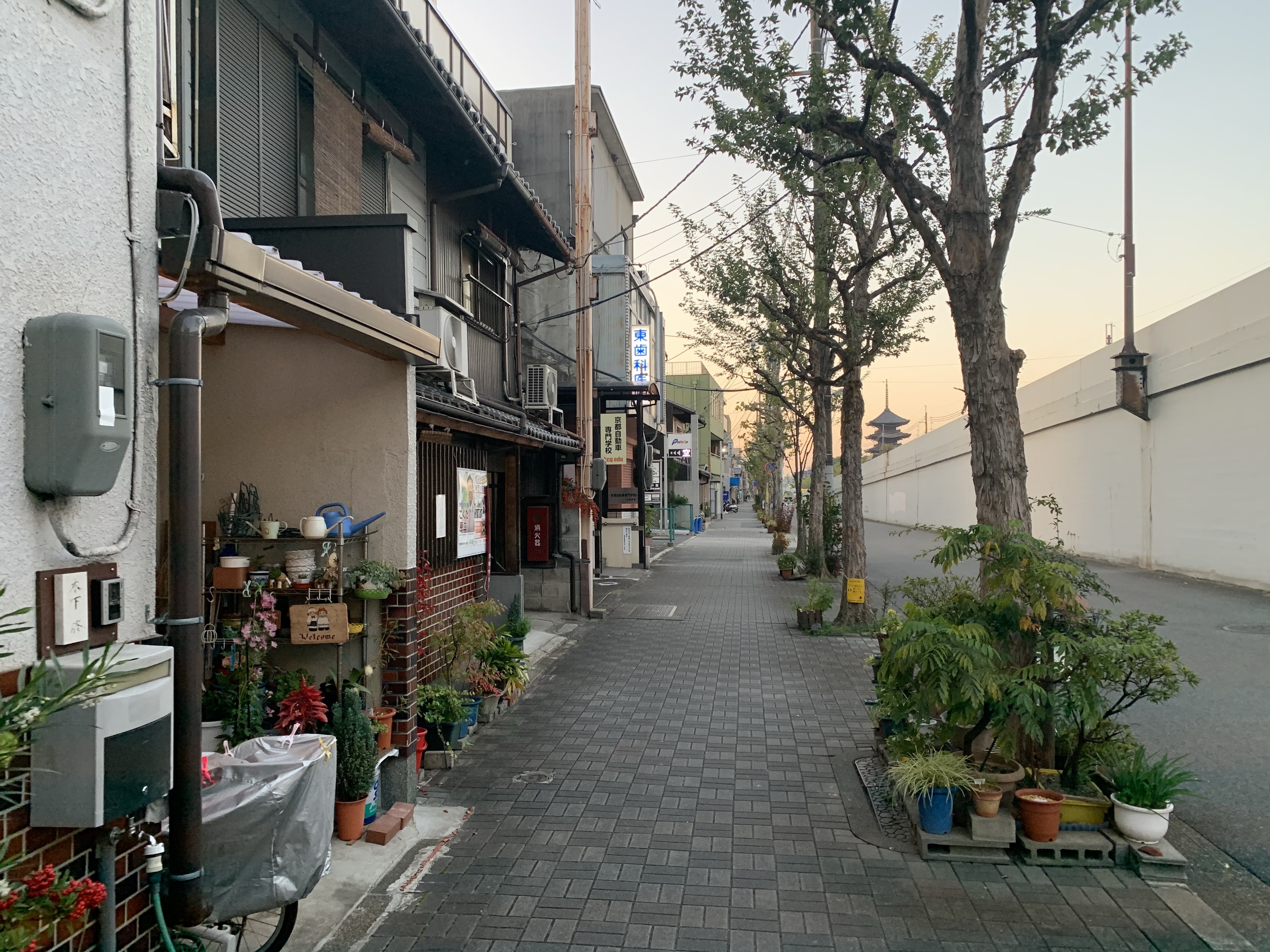
It is worth spending time visiting at least one Buddist temple or Shinto shrine – there are many around the city. We went to one of the oldest – the Tō-ji temple, built in the year 796.
While wandering around admiring the architecture, statues, plants, ponds and art work a lady invited us into her temple for a morning prayer and blessing. We took our shoes off upon entering, took part in the ceremony listening to her instructions throughout. It was a very relaxing experience and made me slightly envious that her morning routine started this way every day.



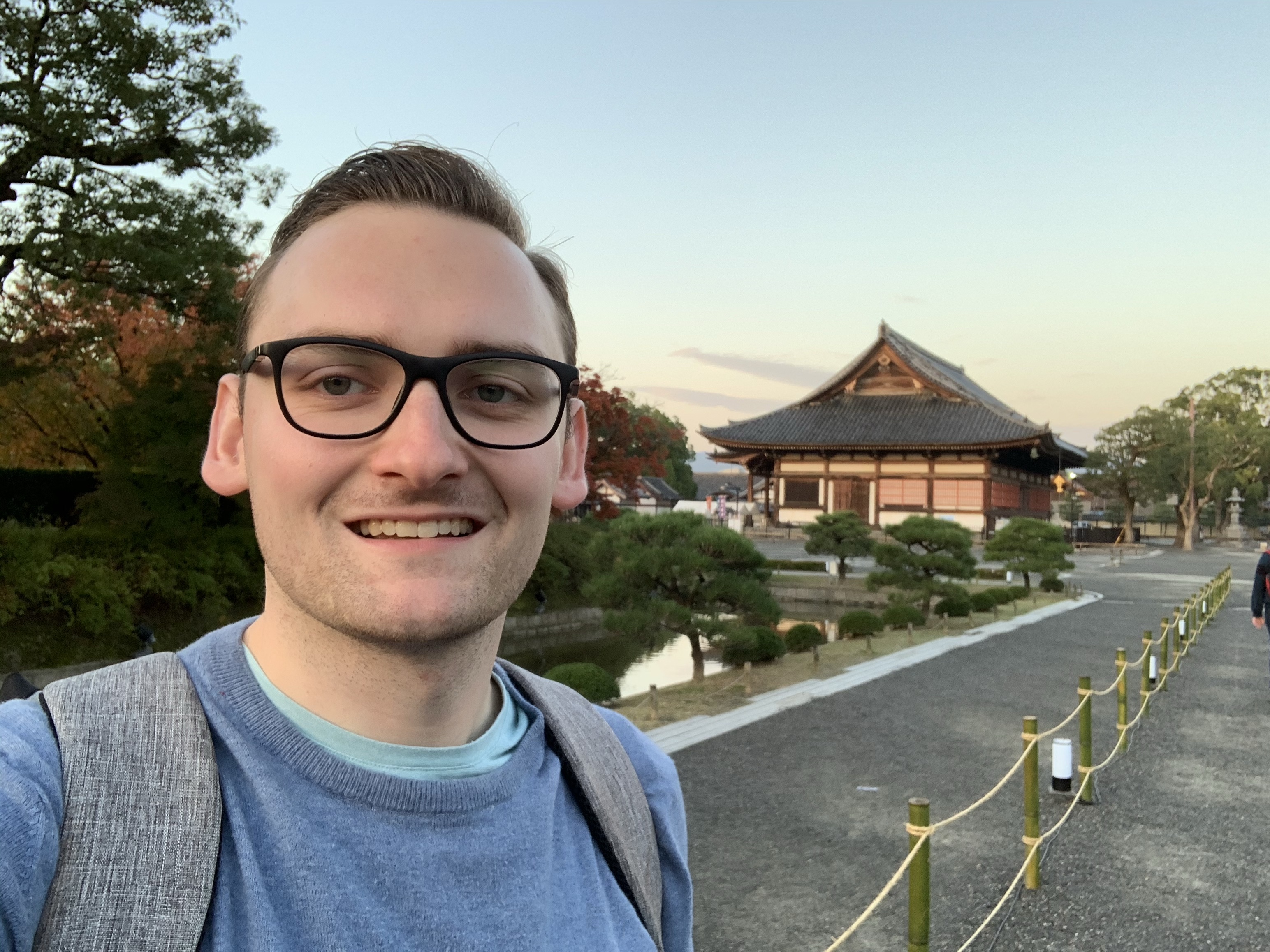


We visited the wonderful Kyoto railway museum in Shimogyō-ku spending three hours wandering around the exhibits. It had everything from the first Shinkansen to a mock control centre and a museum shop.



Hozu-gawa river cruise
The following day we started with a ride onboard a JR Ltd Express train from Kyoto to Kameoka, the starting point for the must-do river boat ride along the Hozu-gawa river.
Kyoto to Kameoka by Ltd. Express Hashidate train



At Kameoka, the river boat terminal is a five minute walk from the station. The Tourist Information Office is within the station and they provided invaluable help with directions to reach the terminal. You purchase your ticket there and then wait for your number to be called out in order of purchase. We had roughly a 20 minute wait and there was a very enthusiastic man holding the board with the ticket numbers calling them – no chance of missing your number!
The ride was exciting, dealing with varied water currents. There were three men rowing the boat however only Japanese was spoken, but the scenery alone was enough to enjoy the trip. There were many bridges where you could observe trains passing and a boat arrived towards the end selling soup and drinks.



The boat journey finished in Arashiyama some ten kilometres from central Kyoto. It was delightful to walk around this area with temples, looking out for Geisha, see the manned level crossing in action and stroll in the Bamboo forest. Then we took a regional train to travel back to central Kyoto.



Our few days in Kyoto concluded and we then headed to Hiroshima.
Kyoto to Hiroshima by Shinkansen
There are direct trains from Kyoto to Hiroshima however these are Shinkansen Nozomi services which are marketed as the premium bullet train services. These services cannot be used with the JR Pass. Therefore we would have to complete the journey with an easy change of train at Shin-Kobe station on the same platform and board the next train.
The change of train is a good chance to stretch the legs, if anything, and gives the opportunity to purchase an Ekiben bento box from the station kiosk. The trains used on the majority of Shinkansen Hikari and Shinkansen Sakura services are actually formed of the same N700 series Shinkansen as the Nozomi services, so comfort levels are exactly the same. The journey time is also the same but with some extra minutes for the change of train.
Our first leg for this journey was on a Shinkansen Hikari service taking 28 minutes. Then, with an eight minute change at Shin-Koke, we boarded the Shinkansen Sakura to travel a further 73 minutes direct to Hiroshima.

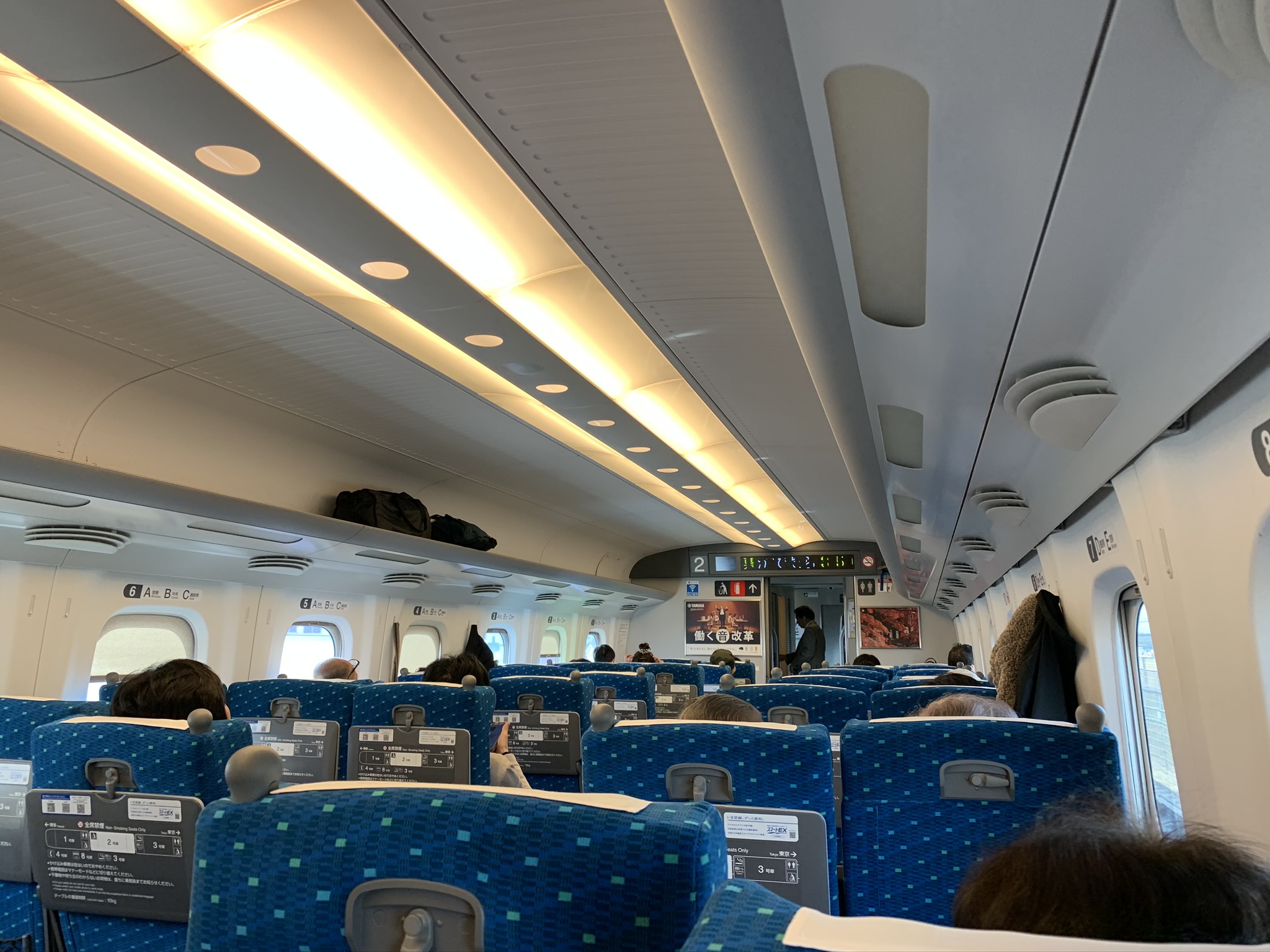

After arriving into Hirsohima we headed straight to the left luggage lockers to store our baggage – these lockers proved invaluable on our trip to Japan, being available at all major stations costing from 200 yen/day to 600 yen/day depending on luggage size.

Day trip to Miyajima (Itsukushima)
Trains depart Hiroshima every 15 minutes for Miyajimaguchi which is on the JR Sanyo line. Then it’s an easy five minute walk to the JR Ferry terminal for the 10 minute boat ride to Miyajima. Both trips are included with the JR Pass.


Miyajima is the perfect place to bag your souvenir with lots of shops selling Japanese gifts. The island is famous for its Momiji manjū cakes which are made of buckwheat and rice powder, they are shaped like maple leaves and contain a red bean paste. Look out for these and for the thousands of friendly Skia deer wandering the streets.



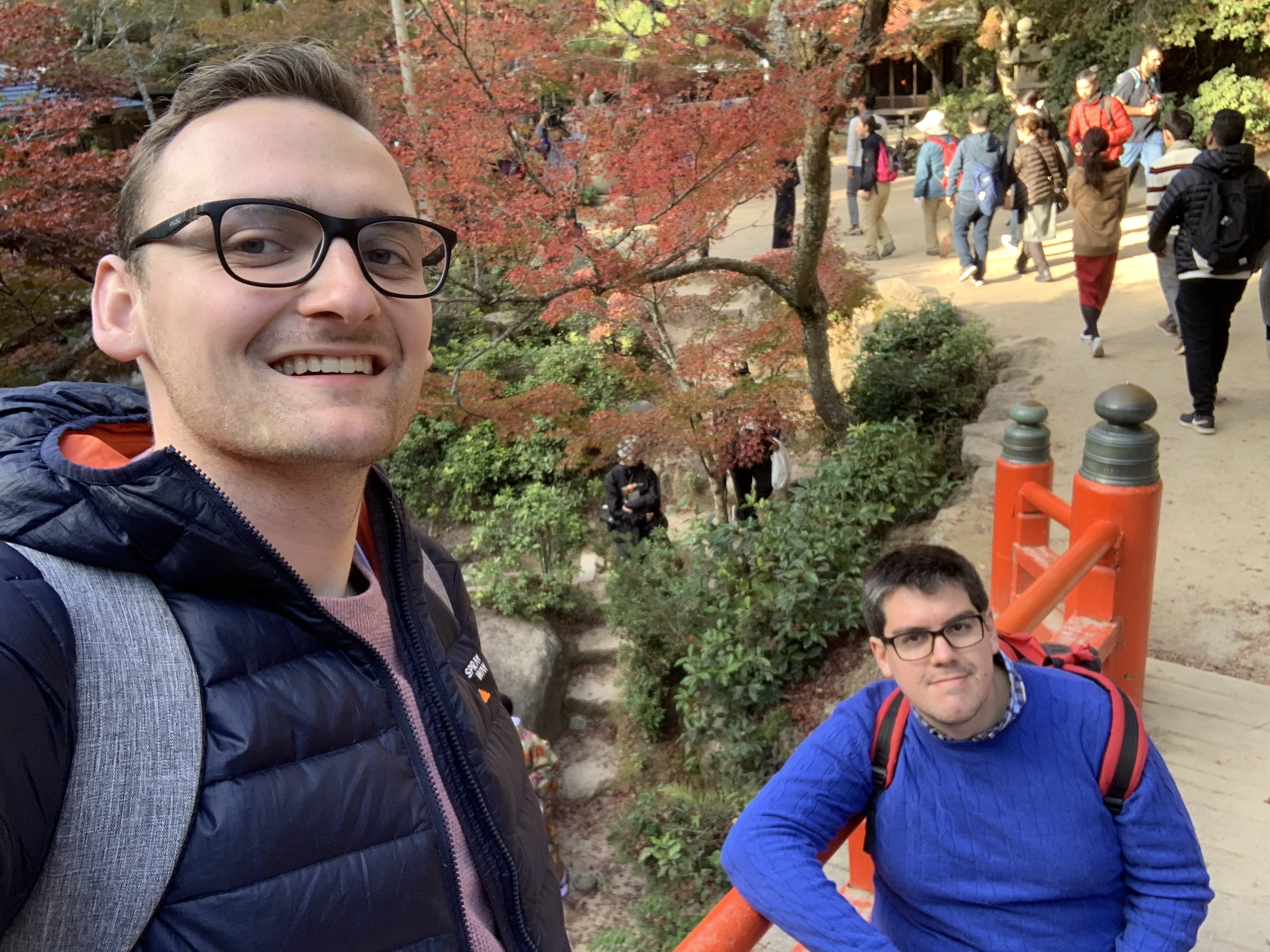
Once you have finished at the shops, it is well worth a trip on the Miyajima Ropeway to see the view from the top of Mount Misen. The cable car is a 15 minute walk away from the centre of Miyajima and is a mean feet of engineering taking the strain off climbing 350 metres of the mountain’s 535 metres.
At the top of the mountain the views of Hiroshima Bay are fantastic with green islands dotted around the water and the city of Hiroshima visible in the distance. Absolutely delightful on a clear day. There is also a café at the top which we enjoyed.






Exploring Hiroshima
Hiroshima is a city which resonates with most people worldwide because of a devastating event that took place in 1945. On 6th August an atomic bomb made of uranium was dropped on the city by American forces during World War II, ultimately killing a total of 140,000 people. Another atomic bomb was dropped days later in Japan but on the city of Nagasaki this time.
I wanted to learn more about what happened so spent a day visiting the extensive Peace Memorial Museum and Park situated alongside each other. I recommend spending the full day visiting both, the Atomic Bomb Dome alone really hits home.
The museum actively supports the movement against nuclear weapons asking visitors to sign up to International Campaign to Abolish Nuclear weapons (ICAN).

Hiroshima has one of the most impressive shrines in Japan, also a World Heritage Site. The Itsukushima Shrine is significant because its torii-gate and shrine are in the middle of the sea! No photos however as we ran out of time.
Hiroshima to Izumoshi by Shinkansen and Ltd. Exp Yakumo
Izumoshi, also known as Izumo, is probably a place you’ve never heard of, we hadn’t neither. Izumo is a small city on the northern coast of Japan. We went to visit not only to get a taste of a non-tourist region of Japan, but also a chance to use our JR Pass for another day and to pick up the Sunrise Izumo sleeper train which starts its journey here.
Our fastest option, and what we perceived to be the most scenic option, to go from Hiroshima to Izumoshi was to travel on a Shinkansen service to Okayama and change onto a Yakumo train direct to Izumoshi there. The day before, booking seats for the fast Shinkansen Sakura trains proved to be a challenge with trains fully reserved and we were advised in the booking office to queue very early for the unreserved cars if we wanted to travel on this.
Instead, we found the option to travel on a slower Shinkansen to Okayama. This Kodama service had plenty of seats available but a longer journey time of 86 minutes instead of 46 minutes. This was operated by the nice retro, swift looking 500 series Shinkansen, which I have to say was my favourite! Just look at that nose! It was nice to see this train, which features in the Railway Museum in Kyoto, on a passenger service.

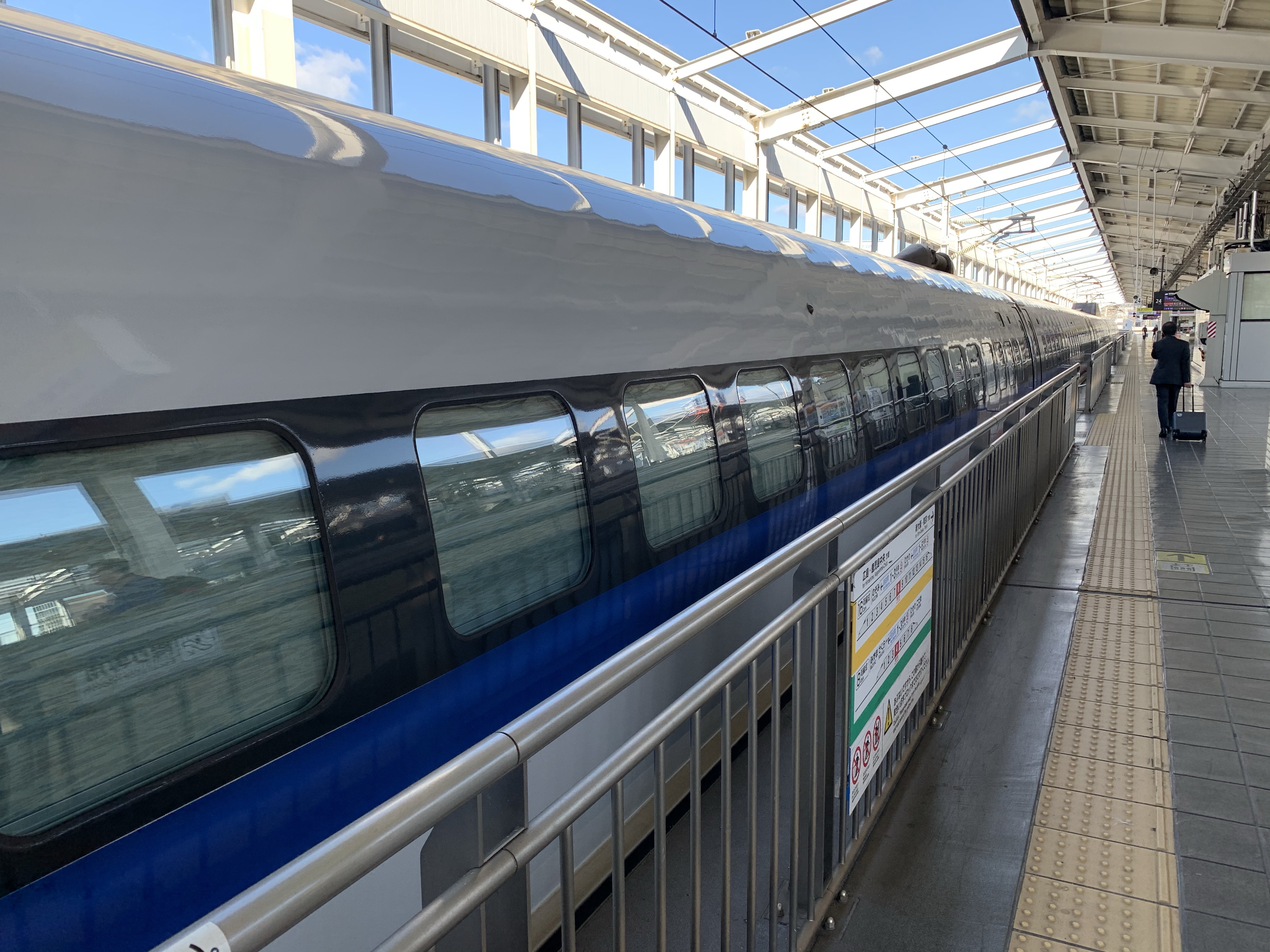
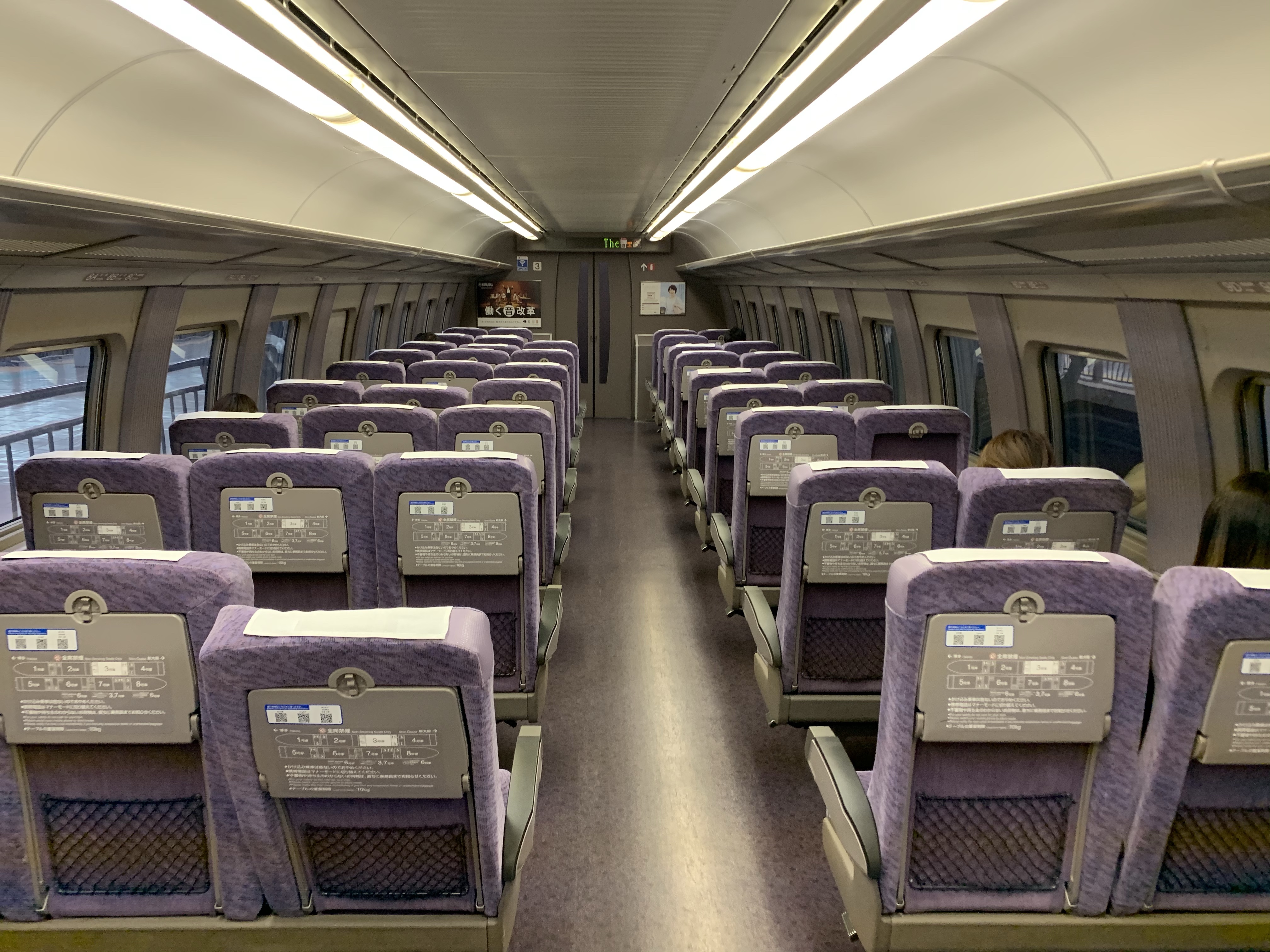


There is no green car on the Kodama service, however just by reserving a seat you can get a reservation in a car which used to be the Green car! The 500 series Shinkansen was degraded from the fast Nozomi services in 2010 to these stopping Shinkansen Kodoma services, because of their age, but I do feel it was well worth the extra 40 minutes of travel at least for the space we had onboard.
After the break in Okayama we boarded the Ltd. Exp Yakumo train bound for Izumoshi. This journey leg took three hours, seven minutes and is a beautiful ride through mountains as the train heads north then, as the train reaches the coast it heads west past rivers and lakes of Nakaumi and Lake Shinji. Before boarding we bought lunch to enjoy with the views – another Ekiben bento box of course!
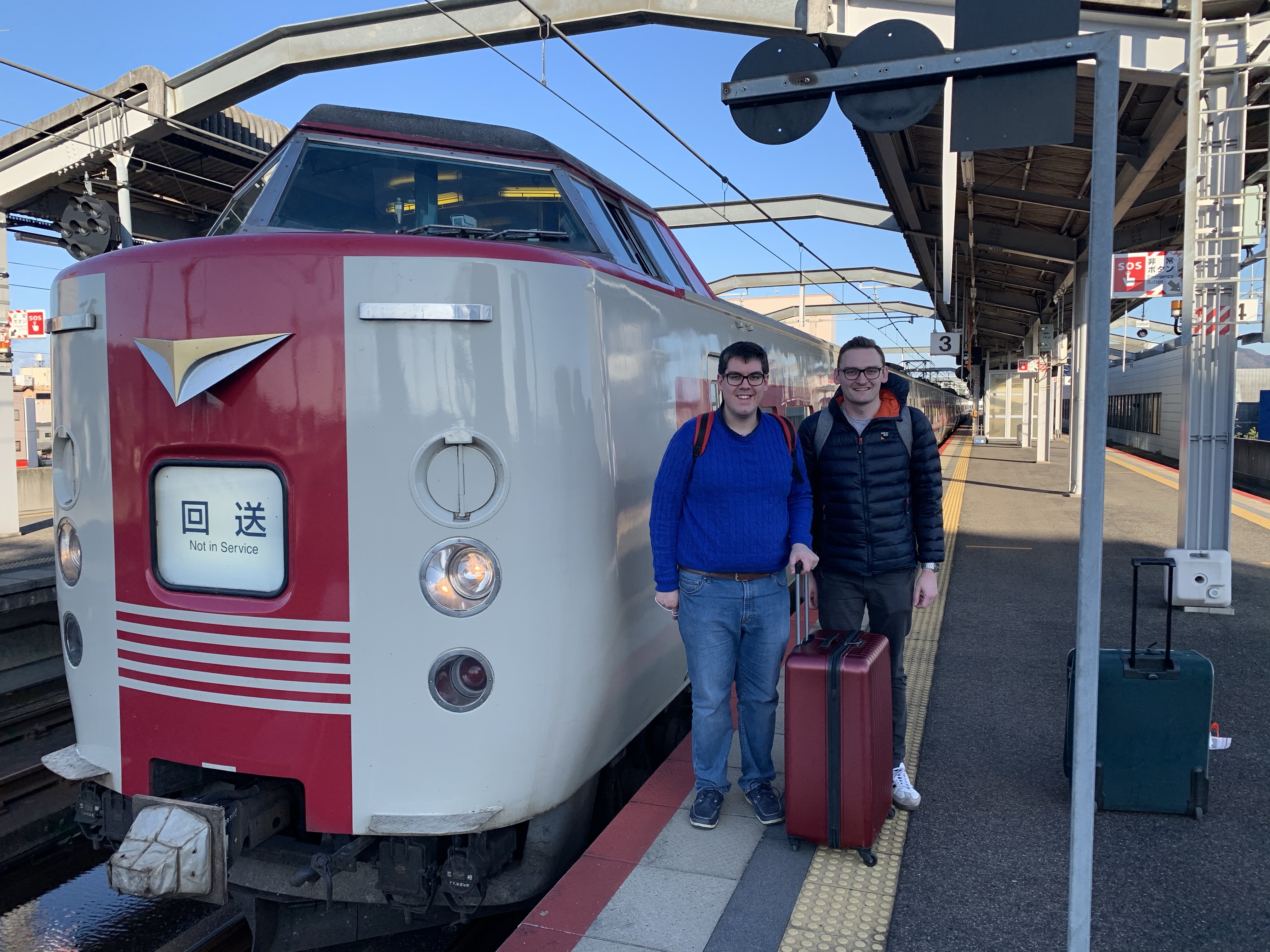
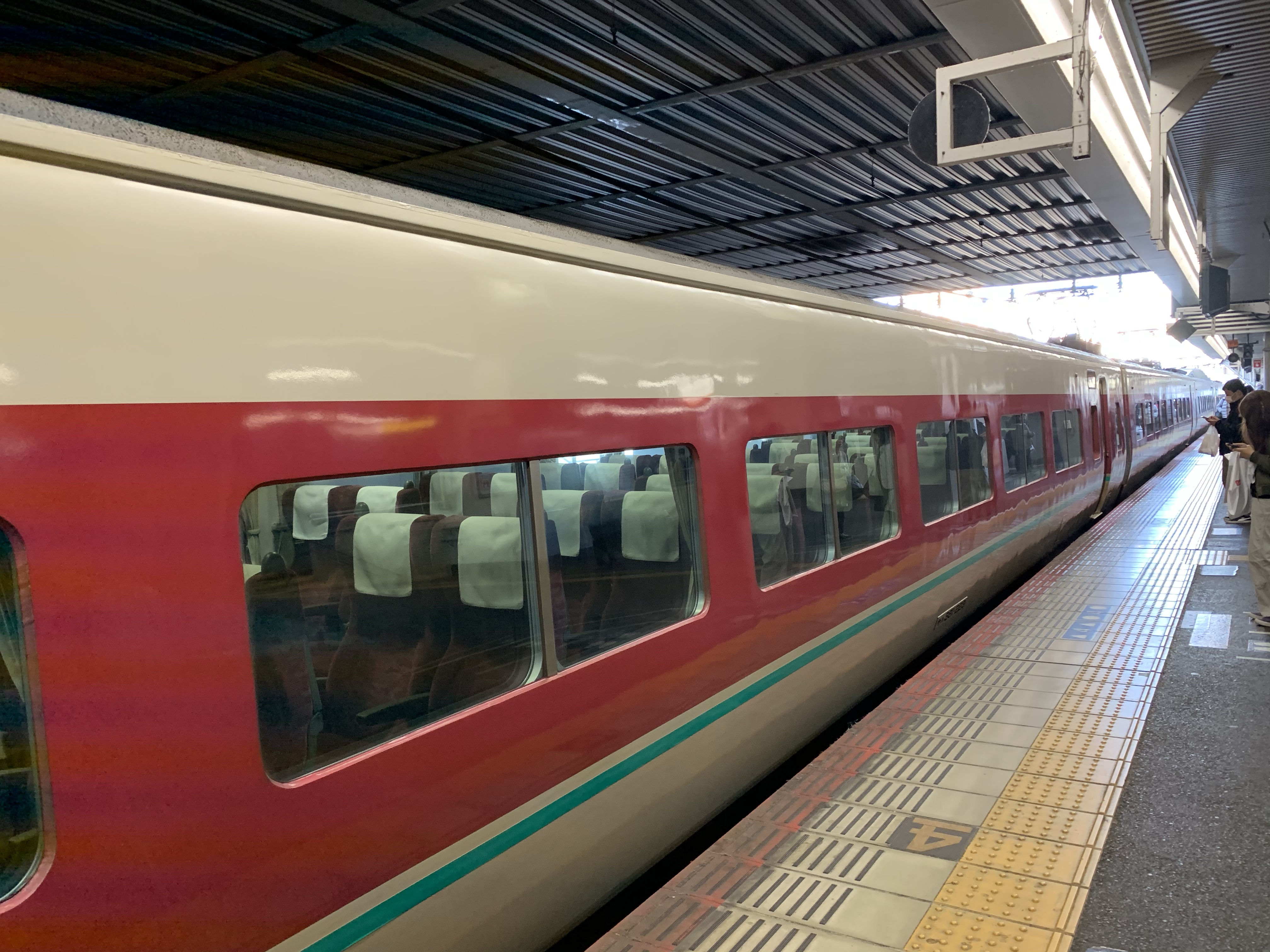

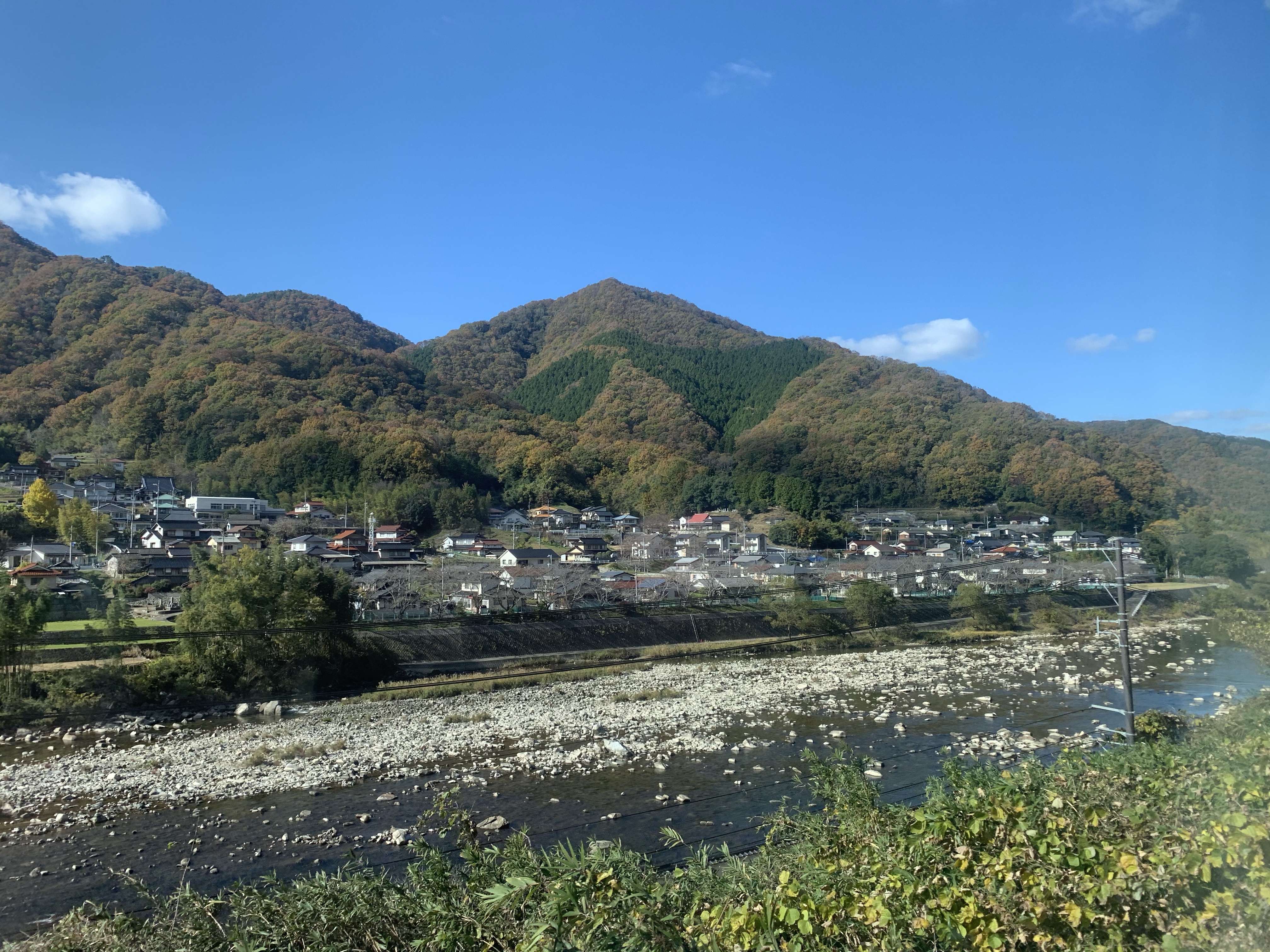



Izumoshi to Tokyo by Sunrise Izumo sleeper train
One of the last remaining sleeper trains in Japan is the Sunrise Izumo. The train actually joins to the one other sleeper train in Japan en route, the Sunrise Seto. The eastbound trains couple together at Okayama and complete the rest of the journey to Tokyo as one train. The westbound trains split at Okayama and follow their respective routes to Izumoshi and Takamatsu.
We joined the Sunrise Izumo in Izumoshi at the start of its journey, departing at 18:51, taking 12 hours and 17 minutes in total and arriving into Tokyo at 07:08.
A variety of accommodation is available priced according to comfort. The most basic option, which is actually free to use with the JR Pass (reservation required), is the Nobinobi sleeping area. This is described by the Japan Railways as a “seat”. This is in fact an open-plan carriage with carpeted areas on two floors for lying down and a section per person. Each “seat” has a window and limited privacy dividers to cover your face.
We had enquired about travelling in the Nobinobi area, but all spaces were sold out (reserving 6 nights before, travelling on Thursday night). We decided to treat ourselves to the other option, a twin sleeping berth, at a total cost of ¥22,000 / £164.30. Just like European sleeper trains – though with a shared WC at the end of the corridor.
We did have a problem with fitting our suitcases in the cabin but once we had been creative with our space challenge we managed fine.
The train had showers and a small seating area with a vending machine selling soft drinks. In order to use the shower there was a dedicated vending machine where you pay ¥320 / £2.39 for a shower card. Then you insert this into the shower and your timer starts for six minutes. This doesn’t sound long, but actually it was plenty of time for a refreshing hot shower.








Life suddenly got busier when stepping off the train into Tokyo. Advertised everywhere was the upcoming 2020 Olympics with a countdown clock outside the station.
Tokyo is a bustling metropolis that boasts an impressive 160,000 eateries. Its attractions include the Tokyo Skytree and Tokyo Tower, which both have observation decks, shrines and temples.
The weather in Tokyo didn’t live up to much, so for our last full day in Japan we dropped sightseeing and searched the country for sunnier climes. We also wanted one final trip on a Shinkansen train. Niigata on the northwest coast seemed a good candidate so we boarded a Max Toki Shinkansen service.
Tokyo to Niigata by Shinkansen
We boarded a Shinkansen Max Toki service direct to the port city of Niigata via the Jōetsu Shinkansen, taking two hours and nine minutes. These double-decker E4 series trains were quite retro (for Japan anyway) dating back to 1997. Each one has a pay-phone located onboard, unmissable due to its luminous green colour!
Shinkansen Toki services operated by single-decker E2 series and newer E7 series trains also operate on the route. We travelled back on an E7 series.
The journey in itself is a delight taking in mountainous scenery cruising past Mount Tanigawa, Mount Naeba and Mount Aizu-Komagatake – be ready with your camera.
Although there’s things to see, Niigata city itself isn’t so much a tourist destination, but for a taste of typical Japanese city (with a small town feel) with a river walk, we had an enjoyable stroll in the sunshine for a few hours.







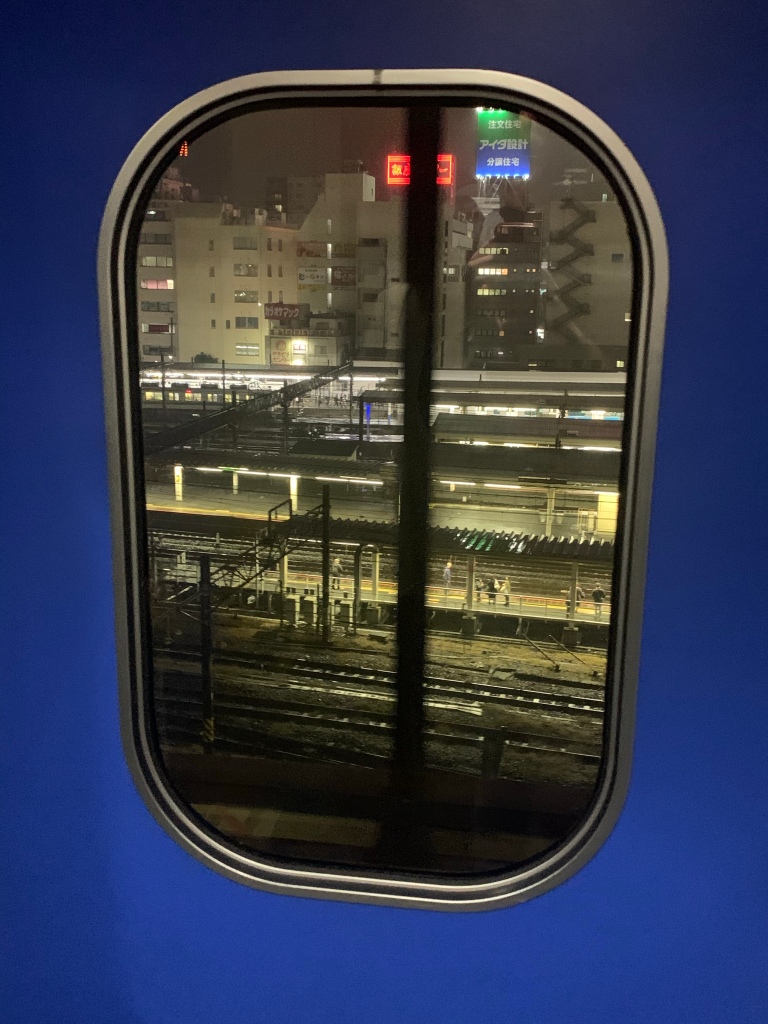


Tokyo Narita (NRT) to London City (LCY) via Warsaw (WAW) with LOT Polish Airlines
The end of the trip was in sight, and the time had come to reflect on the incredible week that we enjoyed in Japan.
The journey back was similar to the way there. We started at Tokyo’s Narita Airport in the morning for a LOT flight departure at 11am bound for Warsaw Chopin Airport taking 11 hours, 25 minutes. Then we had a two hour layover before our connecting flight to London City Airport taking two hours, 40 minutes.
In true Japanese style, this airport was very zen. It was quiet (for an airport) and less hustle and bustle than most airports. There weren’t just seats available for all passengers, but loungers available too – a great way to relax before your flight!




Food wise we had three delicious meals just like we enjoyed on the way there, again incorporating a mix of European and Japanese cuisine. We made use of the attentive service in Premium Economy and in total enjoyed 10 drinks including wine, gin and tonics and Irish Cream on the two flights!

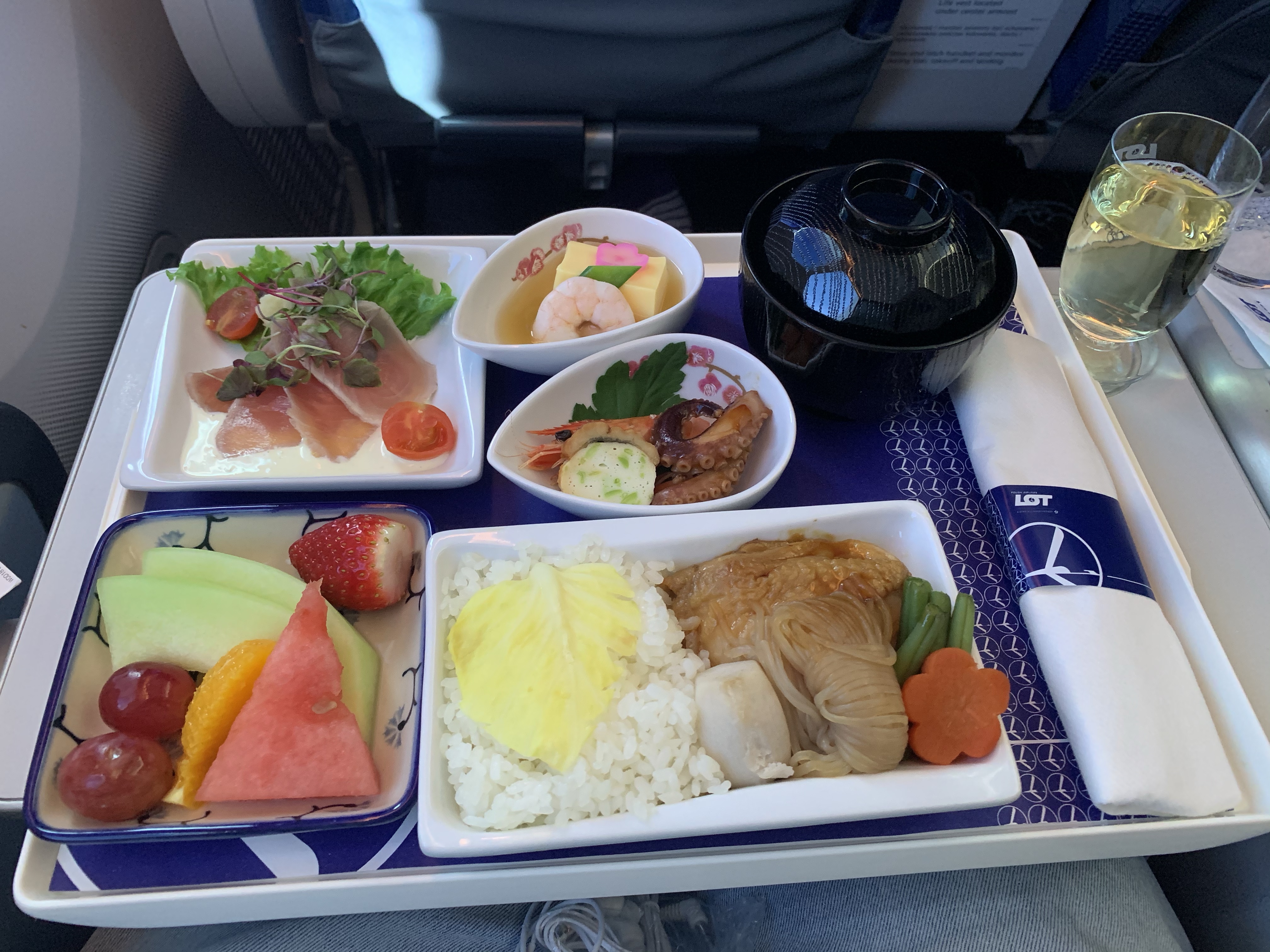
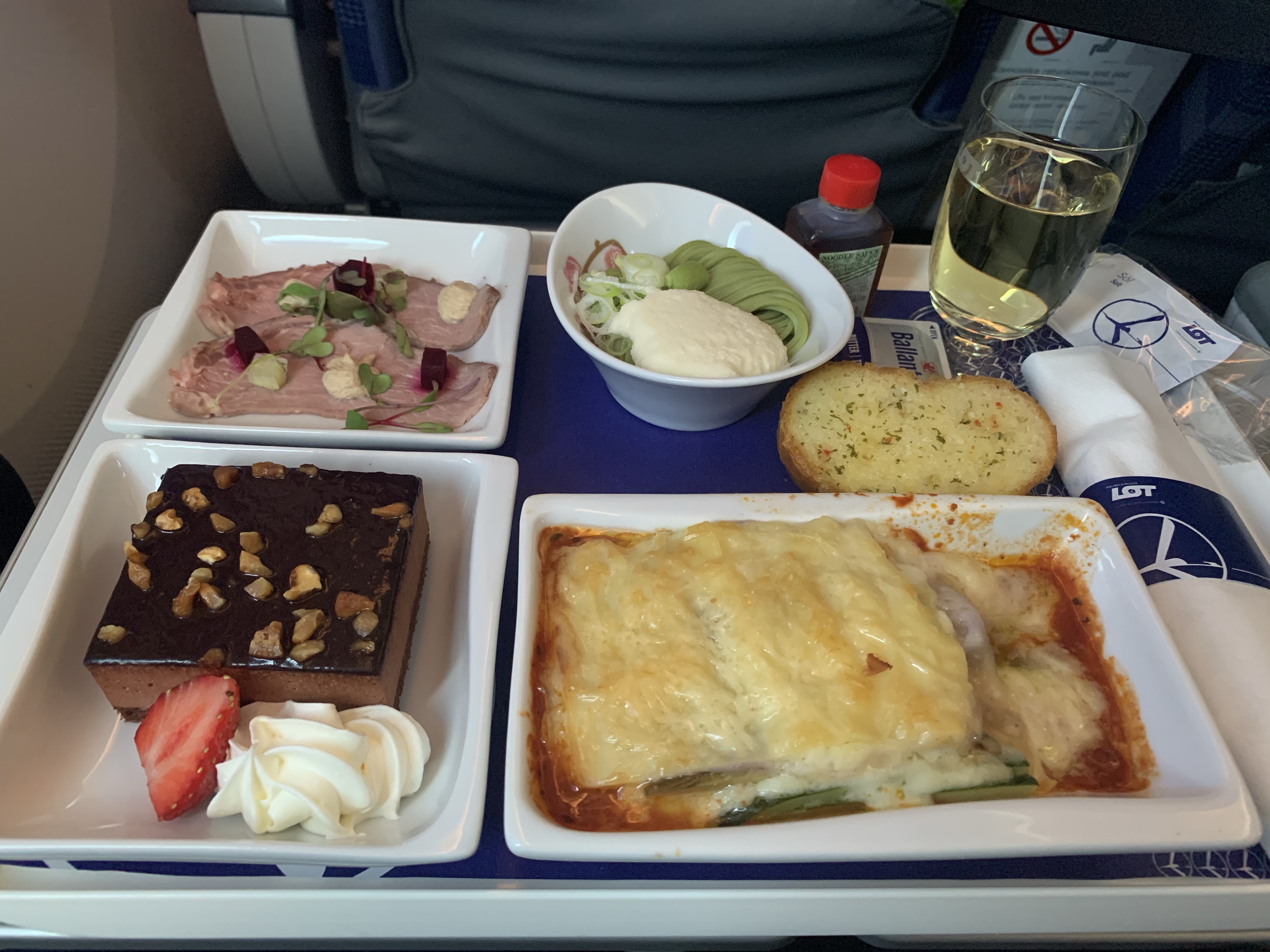




Train Tickets

If you’re planning to travel for a week or more, then without a doubt the Japan Rail Pass is what you need. This is only available for tourists residing outside of Japan. Passes are available for 7 days, 14 days and 21 days continuous travel and the prices can be found in the table below. You are required to purchase the Japan Rail Pass via a travel agent in advance of travel who will send you an exchange order. Then, when you arrive in Japan, you are required to visit one of the ticket offices to swap it for your train pass. We purchased ours via International Rail, a reputable travel agent in the UK.
| Japan Rail Pass | 2nd Class | 1st Class (Green Car) |
| 7 Days Continuous | £217 | £289 |
| 14 Days Continuous | £345 | £468 |
| 21 Days Continuous | £441 | £608 |
| Train | Supplement with JR Pass | Full Price without JR Pass |
| Tokyo Narita Airport to Tokyo by Narita Express (NEX) | Free – including compulsory seat reservations | Ticket Price +¥1,340 / +£10.07 —————————- Compulsory Reservation +¥1,930 / +£14.50 Green Car +¥3,300 / +£24.80 |
| Tokyo to Kyoto by Shinkansen | Free – including optional seat reservation | Ticket Price ¥8,360 / £62.82 —————————- No reservation +¥4,960 / +£37.27 Reservation +¥5,690 / +£47.25 Green Car +¥10,360 / +£77.84 |
| Kyoto to Kameoka by Ltd. Exp Hashidate train | Free – including optional seat reservation | Ticket Price ¥420 / £3.16 —————————- No reservation +¥660 / +£4.96 Reservation +¥1,390 / +£10.44 Green Car +¥1,960 / +£14.73 |
| Kyoto to Hiroshima by Shinkansen (change at Shin-Kobe) | Free – including optional seat reservation | Ticket Price ¥6,600 / £49.59 —————————- No reservation +¥4,170 / +£31.33 Reservation +¥4,900 / +£36.82 Green Car +¥8,360 / +£62.82 |
| Hiroshima to Miyajimaguchi | Free – reservations not possible | Ticket Price ¥420 / £3.11 |
| Miyajimaguchi to Miyajima ferry | Free – reservations not possible | Ticket Price ¥180 / £1.33 |
| Hiroshima to Okayama by Shinkansen (Kodama or Sakura) | Free – including optional seat reservation | Ticket Price ¥3,080 / £23.14 —————————- No reservation +¥2,530 / +£19.01 Reservation +¥3,260 / +£24.50 Green Car +¥5,330 / +£40.05 |
| Okayama to Izumoshi by Ltd. Exp Yakumo | Free – including optional seat reservation | Ticket Price ¥4,070 / £30.58 —————————- No reservation +¥2,420 / +£18.18 Reservation +¥3,150 / +£23.67 Green Car +¥6,610 / +£49.67 |
| Izumoshi to Tokyo by Sunrise Izumo sleeper train* | Nobinobi “Seat” (carpeted bed): Free, but reservation required. Twin Room: total ¥22,000 / £164.30 Single Deluxe Room: ¥17,280 / £129.05 | Ticket Price ¥12,200 + Seat (carpeted bed): ¥4,030 / £30.10 for reservation. Twin Room: total ¥22,000 / £164.30 Single Deluxe Room: ¥17,280 / £129.05 |
| Tokyo to Niigata by Shinkansen | Free – including optional seat reservation | Ticket Price ¥5,720 / £42.98 —————————- No reservation +¥4,510 / +£33.89 Reservation +¥5,240 / +£39.37 Green Car +¥8,700 / +£65.37 |
| Niigata to Tokyo by Shinkansen | Free – including optional seat reservation | Ticket Price ¥5,720 / £42.98 —————————- No reservation +¥4,510 / +£33.89 Reservation +¥5,240 / +£39.37 Green Car +¥8,700 / +£65.37 |
| Tokyo to Tokyo Narita Airport by Narita Express (NEX) | Free – including compulsory seat reservations | Ticket Price +¥1,340 / +£10.07 —————————- Compulsory Reservation +¥1,930 / +£14.50 Green Car +¥3,300 / +£24.80 |
This article was first published in May 2020.
